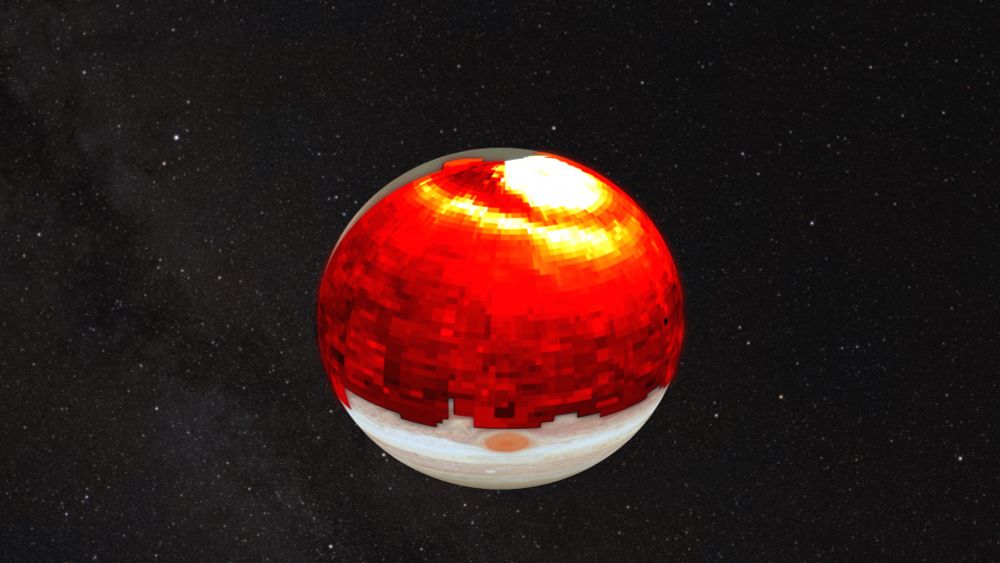
A jet stream speeds around the pole at 320 km/h (200 mph). That’s common among planets, but what's not is that it oscillates up and down *very* stably. Each low point of this sine wave becomes a corner of a hexagon, when projected onto a sphere:
A jet stream speeds around the pole at 320 km/h (200 mph). That’s common among planets, but what's not is that it oscillates up and down *very* stably. Each low point of this sine wave becomes a corner of a hexagon, when projected onto a sphere:

That heat expanded the atmosphere around the planet in a thermal wave over 12 Earths long.

That heat expanded the atmosphere around the planet in a thermal wave over 12 Earths long.
We found that external solar forcing plays a major role, despite this.

We found that external solar forcing plays a major role, despite this.
We caught Jupiter’s upper atmosphere reacting dramatically to a bursts of solar wind, which triggered a planet-wide wave of heat to flow from the auroras. This changes how we think about the Sun’s influence at the outer planets.
www.reading.ac.uk/news/2025/Re...

We caught Jupiter’s upper atmosphere reacting dramatically to a bursts of solar wind, which triggered a planet-wide wave of heat to flow from the auroras. This changes how we think about the Sun’s influence at the outer planets.
www.reading.ac.uk/news/2025/Re...

Don't look at the Sun direct, use some eclipse glasses or make a pinhole camera: www.jpl.nasa.gov/edu/resource...

Don't look at the Sun direct, use some eclipse glasses or make a pinhole camera: www.jpl.nasa.gov/edu/resource...


Today, Earth is on the left of the video below!
Today, Earth is on the left of the video below!

This is a simulation by Jacob Kegerris (Durham University)
This is a simulation by Jacob Kegerris (Durham University)
Added an additional dwarf planet, Ceres, which is in the asteroid belt, for symmetry... (there are many more still!)
Added an additional dwarf planet, Ceres, which is in the asteroid belt, for symmetry... (there are many more still!)




We are observing the auroras of Saturn in the northern and southern hemispheres 🪐🔭

We are observing the auroras of Saturn in the northern and southern hemispheres 🪐🔭
Here's a side-by-side comparison (race?) of their velocities!
Here's a side-by-side comparison (race?) of their velocities!


